I am following this tutorial and have managed to make a working circuit but when I connect it to a high current power source such as a USB 3 port, the transistor gets so hot that I fear it may burn just after running it for a few seconds. This does not happen when connected to batteries. What am I doing wrong? I have calculated that current flow should be less than 1 mA because of the 5.6 kOhm resistor based on the fact that 5/5600 = 0.00089 A or 0.89 mA. The transistor is rated at 1.5A and 80V (here's a link) which is well below what I am providing it with since even USB 3 provides no more than 900 mA at 5V.
(By the way, based on the amount of current draw, is it safe to run this from, say, an Arduino?)
EDIT: Thanks to Dave Tweed here is the actual schematic I am following:
